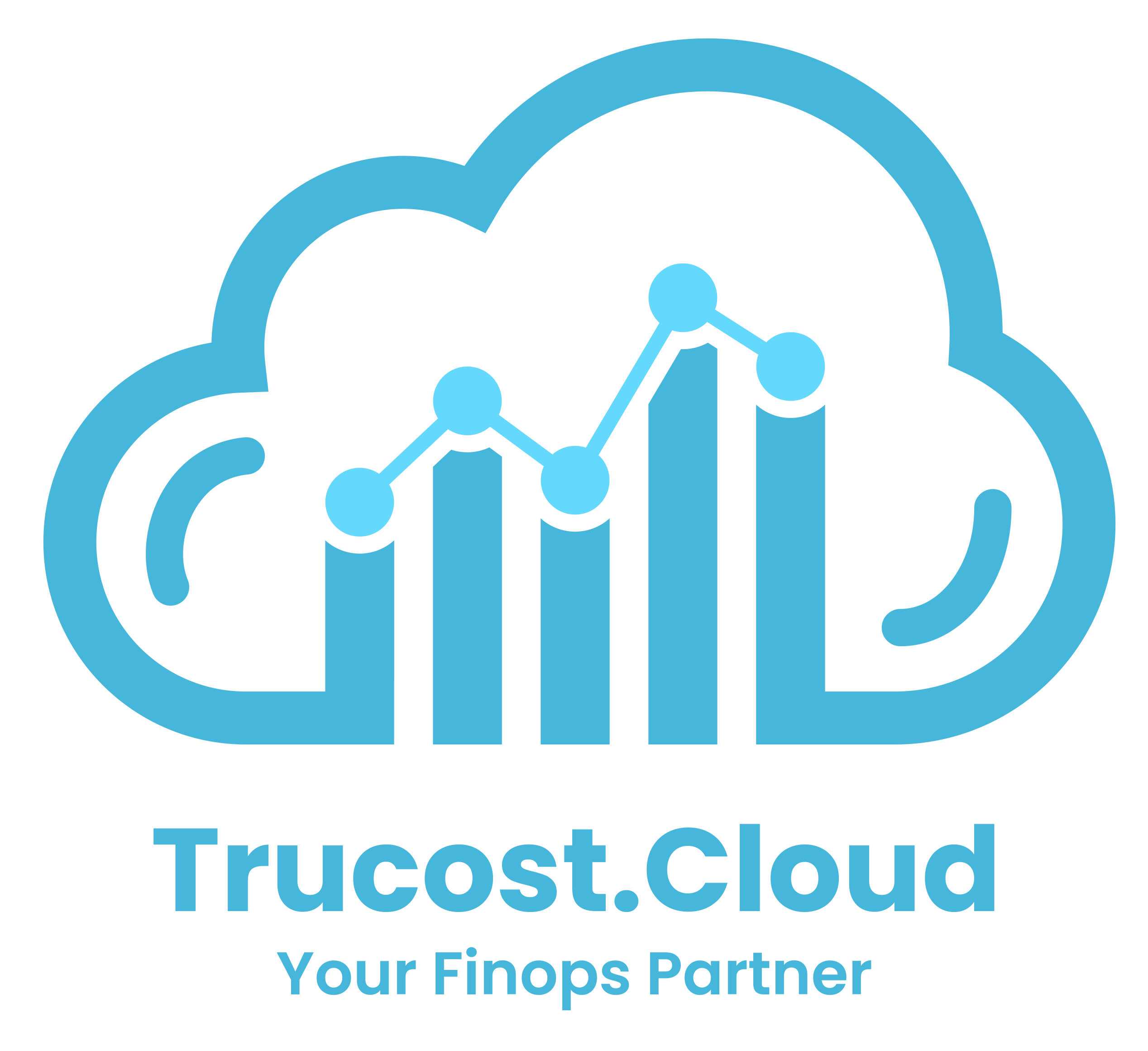
5 Powerful Ways to Manage Resources with AWS Resource Tags
Effective management of AWS resources starts with the right use of AWS resource tags. AWS resource tags are crucial for identifying and managing untapped or untagged resources. As cloud environments grow, ensuring all resources are tagged correctly becomes essential for optimizing cloud management and controlling costs. This guide will walk you through how to uncover untagged resources using AWS resource tags, providing best practices and strategies to enhance your cloud governance and achieve cost efficiency.
What Are AWS Resource Tags?
AWS resource tags are metadata that you can attach to your AWS resources. Each tag consists of a key and a value, which helps categorize and manage resources effectively. Tags can include information like project names, environment types (e.g., development, staging, production), or cost centers. Proper resource tags allows you to track usage, allocate costs, and enforce governance policies more efficiently.
Why Are AWS Resource Tags Important?
Cost Management: AWS resource tags help in breaking down your AWS costs by various dimensions, such as project or department. This visibility allows you to understand where your spending is concentrated and take corrective actions.
Resource Organization: AWS resource tags facilitate better organization of resources, making it easier to search and filter them. For example, you can group resources by their lifecycle stage or business unit.
Compliance and Security: Resource tags helps in maintaining compliance and enhances security by enabling better monitoring and access control based on tags.
Despite the importance of tagging, many AWS environments often contain untagged resources, which can lead to challenges in resource tracking, cost allocation discrepancies, and security vulnerabilities. Identifying and addressing these untagged resources is key to maintaining a well-organized and
optimized AWS environment. In this blog post, we’ll explore strategies and tools for finding untagged resources on AWS.
Strategies for Finding Untagged Resources
1. Utilize Tag Editor
What is Tag Editor?
AWS Tag Editor is a native AWS tool that allows you to search, manage, and apply tags across multiple resources in one place.
How to Use It:
- Navigate to the AWS Management Console → Resource Groups & Tag Editor.
- Filter resources by region, resource type, and tag key-value pairs.
- Identify untagged resources and update them accordingly.
Why It Matters: Tag Editor provides a centralized way to audit and standardize tagging across AWS services efficiently.
2. Leverage AWS Config Rules
What is AWS Config?
AWS Config continuously monitors AWS resource configurations and helps ensure compliance with governance policies, including tagging.
How to Use It:
- Create a custom AWS Config rule to check for missing mandatory tags.
- Set up automated remediation actions, such as triggering AWS Lambda to apply default tags or sending alerts via SNS.
Why It Matters: Automating tag compliance reduces manual effort and ensures that all AWS resources adhere to defined tagging policies.
3. Use AWS Cost Explorer
What is AWS Cost Explorer?
AWS Cost Explorer is a financial management tool that helps analyze cloud costs and usage.
How to Use It:
- Open AWS Cost Explorer → Apply tag-based filters.
- Identify resources that do not have cost allocation tags.
- Prioritize tagging based on high-cost untagged resources.
Why It Matters: Proper tagging improves cost visibility, enables accurate chargeback/showback reporting, and optimizes budget allocation.
4. Implement AWS Lambda Functions
What is AWS Lambda?
AWS Lambda lets you run scripts that automate AWS tasks, including scanning for untagged resources.
How to Use It:
- Deploy a scheduled Lambda function that checks all resources for missing tags.
- Generate a CSV report or trigger notifications to the appropriate teams.
- Optionally, apply default tags automatically using the AWS SDK.
Why It Matters: Automating tag checks minimizes manual intervention and ensures continuous compliance with tagging policies.
5. AWS Service Control Policies (SCPs)
What are SCPs?
SCPs allow you to define policies that govern resource usage at an AWS Organization level.
How to Use It:
- Set up SCPs in AWS Organizations to enforce mandatory tagging.
- Prevent the creation of resources without specific tags.
- Ensure organization-wide tagging consistency across accounts.
Why It Matters: SCPs help establish strong governance and security controls by making tagging a mandatory requirement.
6. CUR Athena Query
This SQL query helps analyze AWS resource tags within the AWS Cost and Usage Report (CUR) to identify untagged resources across accounts and services.
How This Query Helps with AWS Resource Tagging:
✅ Counts AWS resources by account and service.
✅ Identifies missing AWS resource tags by checking resource_tags_user_env.
✅ Calculates tagging compliance by measuring the percentage of tagged vs. untagged resources.
✅ Groups data by AWS account and product code for better visibility.
WITH allresources AS (
SELECT
line_item_usage_account_id
, line_item_product_code
, count(DISTINCT line_item_resource_id) AS count_resource
, CASE
WHEN resource_tags_user_env = ” THEN ‘NoTag’
ELSE ‘Tag’
END AS Tag_Status
FROM <CUR Table>
WHERE year=’2025′
GROUP BY line_item_usage_account_id, line_item_product_code, 4 — 4 represents
the Tag_Status column
)
SELECT
line_item_usage_account_id
, line_item_product_code
, sum(count_resource) AS “resources”
, sum(CASE WHEN Tag_Status = ‘Tag’ THEN count_resource ELSE 0 END) AS
“tagged_resources”
, round(sum(CASE WHEN Tag_Status = ‘Tag’ THEN CAST(count_resource AS double)
ELSE 0. END)/ sum(count_resource) 100.,
1) AS “percentage_tagged”
FROM allresources
GROUP BY 1,2
Best Practices for Managing AWS Resource Tags
Define a Tagging Strategy: Establish a consistent tagging strategy that aligns with your organizational needs. Define tag keys and values that make sense for your business processes and cost tracking.
Automate Tagging: Use automation tools and scripts to ensure new resources are tagged appropriately. AWS Lambda functions and AWS CloudFormation templates can be used to enforce tagging policies.
Regular Audits: Conduct regular audits to ensure all resources are tagged correctly. AWS Config rules and AWS Trusted Advisor can help in automating compliance checks.
Educate Your Team: Ensure that your team understands the importance of tagging and follows the tagging policy consistently. Regular training and communication can reinforce good tagging practices.
Reach Out to TruCost.Cloud for Expert Support
For personalized assistance with AWS cost allocation, resource tag compliance, and cost showback, don’t hesitate to contact us at TruCost.Cloud. Our team of experts is here to help you implement effective tagging strategies, ensure compliance, and optimize your cloud spending. Get in touch today to enhance your cloud management and achieve better cost efficiency.
AWS Resource Tags – Frequently Asked Questions (FAQs)
1. What are AWS resource tags?
AWS resource tags are metadata labels you attach to AWS resources. Each tag consists of a key (like Project or Environment) and a value (like MobileApp or Production). Tags help organize, track, and manage AWS resources more effectively.
2. Why are AWS resource tags important for cost management?
Without tags, AWS costs are aggregated at the account level, making it difficult to attribute spending. Tags allow you to:
- Break down AWS bills by team, project, or department.
- Enable cost allocation reports in AWS Cost Explorer.
- Identify untagged but expensive resources for immediate action.
3. How do untagged AWS resources impact cloud governance?
Untagged resources create:
- Cost visibility issues → You can’t allocate expenses correctly.
- Compliance gaps → Harder to prove governance and security adherence.
- Resource sprawl → Forgotten or unused instances may keep running unnoticed.
4. What tools can I use to find untagged AWS resources?
You can use multiple AWS-native tools to identify untagged resources:
- AWS Tag Editor → Search and apply missing tags across accounts.
- AWS Config Rules → Automatically check compliance for required tags.
- AWS Cost Explorer → Spot untagged high-cost resources.
- AWS Lambda → Automate scheduled tag checks and reporting.
- Athena CUR Queries → Run SQL queries against the Cost & Usage Report.
5. How does AWS Tag Editor work?
AWS Tag Editor provides a central dashboard to view and manage tags across services. You can:
- Filter resources by region, type, or tag key-value pairs.
- Identify untagged resources.
- Apply or update tags in bulk.
6.Can I enforce tagging compliance automatically?
Yes . You can enforce compliance using:
- AWS Config Rules → Ensure mandatory tags exist.
- Lambda Remediation → Auto-tag resources with default values.
- AWS Service Control Policies (SCPs) → Block creation of untagged resources across AWS Organizations.
7. How does AWS Cost Explorer help with resource tagging?
AWS Cost Explorer allows filtering costs by tag keys. This helps you:
- Detect resources not linked to cost allocation tags.
- Prioritize tagging on high-cost workloads.
- Improve budget tracking and showback/chargeback reporting.
8. How can AWS Lambda functions automate tagging?
AWS Lambda can be scheduled to:
- Scan resources for missing tags.
- Generate CSV reports or send alerts via SNS/SES.
- Auto-apply default tags using AWS SDK.
This reduces manual effort and ensures continuous compliance.
9. What role do AWS Service Control Policies (SCPs) play in tagging?
SCPs are part of AWS Organizations and let you enforce organization-wide rules. You can:
- Prevent creation of untagged resources.
- Define mandatory tagging keys like CostCenter, Owner, or Environment.
- Ensure cross-account consistency in tagging policies.
10. How can I use Athena queries on AWS Cost and Usage Reports (CUR) for tagging insights?
By querying the CUR with Athena, you can:
- Count tagged vs. untagged resources.
- Calculate tagging compliance percentages.
- Group resources by account, service, or tag key.
This approach gives granular visibility into untagged resources across multiple AWS accounts.
11. What are the best practices for managing AWS resource tags?
- Define a tagging strategy before scaling workloads.
- Automate tagging using Lambda, CloudFormation, or IaC pipelines.
- Audit regularly with AWS Config and Trusted Advisor.
- Educate teams on tagging policies to avoid inconsistencies.
- Use a limited, consistent set of tag keys to avoid clutter.
12. Can AWS Trusted Advisor help with tagging?
Yes. Trusted Advisor includes checks for tagging compliance and can highlight untagged resources. Combined with AWS Config, it provides a strong governance framework.
13. How often should I audit AWS resource tags?
Best practice:
- Monthly audits for small/mid-sized accounts.
- Weekly automated checks for large enterprise environments.
This ensures new resources are always compliant with tagging policies.
14. What happens if I don’t implement tagging in AWS?
- Costs become unattributable to teams or projects.
- Unused resources may accumulate, leading to wasted spend.
- Harder to prove compliance with internal or external regulations.
- Teams may face challenges in security, automation, and governance.
15. How can TruCost.Cloud help with AWS resource tagging?
TruCost.Cloud provides:
- Expert-designed tagging frameworks aligned with FinOps practices.
- Automated tagging compliance monitoring.
- Custom CUR Athena queries for untagged resource analysis.
- Cost showback/chargeback models for financial accountability.






